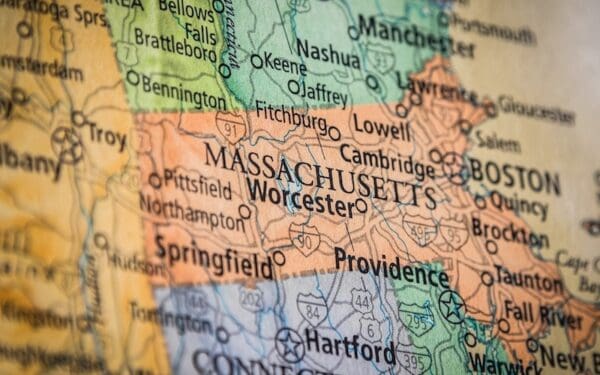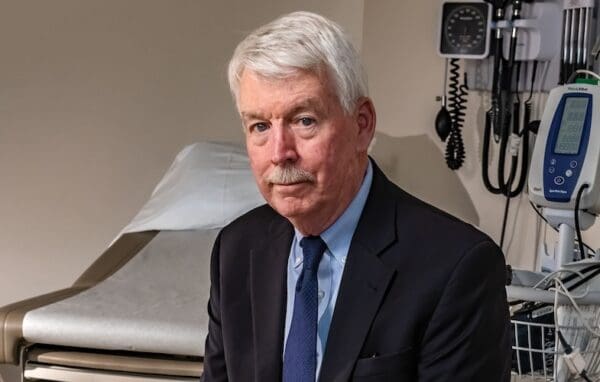Septic Systems Deserve Our Attention
There is a lot of discussion on how climate change is causing sea level rise and more frequent and intense rain and snow storms. But what does that mean to our daily lives?
Ultimately, the dangers posed by climate change come not just from catastrophic events like Hurricanes Irene and Sandy. Warming temperatures and melting glaciers are already causing a steady rise in sea level along our coastlines.
This change in sea level will raise groundwater tables in New England, which will in turn disrupt the functioning of the most basic infrastructure many of us rely on every day – our septic systems. In CLF’s new white paper, Avoiding Septic Shock, Staff Attorney Elena Mihaly looks at how climate change will impact septic systems and how lawmakers can get ahead of this clean water issue by adapting septic system regulations to the climate changes to come.
How Do Septic Systems Work?
Septic systems collect, store, and process sewage for homes and small businesses. The process starts in the septic tank, where bacteria breaks down solid waste while liquid waste flows into a soil treatment area referred to as the “leachfield.”
As the wastewater flows through the leachfield, natural chemical and microbial processes break down and remove pathogenic organisms and other contaminants. The treated wastewater then flows through the soil underneath the leachfield and into the groundwater and nearby surface waters.
Nearly half the homes in New England rely on septic systems rather than a municipal sewer system. When functioning properly, septic systems filter out harmful bacteria and pathogens to ensure nearby groundwater and surface waters are safe for human health and the environment. But rising sea levels, increased precipitation, and warmer temperatures associated with climate change are all adversely impacting these systems.
Climate Change Can Cause Septic Systems to Fail
In order for septic systems to properly filter wastewater, there must be enough unsaturated soil between the leachfield and the groundwater table. The system works so long as the groundwater levels remain relatively constant. But climate-change-induced sea level rise and increased precipitation are raising groundwater tables across New England. As water tables rise, the amount of unsaturated soil for the wastewater to filter through is reduced, making septic systems less effective.
More frequent and intense rain- and snowfall also reduces the amount of oxygen in the soil. Oxygen is a key component of the chemical processes that break down pathogens in wastewater. Similarly, rising temperatures also result in less oxygen available for necessary aerobic treatment processes.
Any of these issues alone can result in septic system failure – all of them together, if continually left unaddressed, could result in a major breakdown of the critical infrastructure we all rely on for safe water. No one wants a septic system to fail. Failed septic systems mean household sewage doesn’t get filtered properly, and result in contaminated drinking water and nearby surface waters. Septic system failures also lead to overflowing leachfields in peoples’ backyards and gross, smelly nuisances to clean up.
But just because the climate is changing, we don’t have to sit back and suffer the consequences. Lawmakers can adapt septic system regulations to account for climate change and they need to act now.
Septic system failures are already leading to human health warnings at treasured swimming locations in New England, such as Wallis Sands beach in Rye, New Hampshire. While rising sea level and other climate-related impacts to septic systems have not been identified as the sole cause of Rye’s system failures, people within the community acknowledge the contributory impact of sea level rise on these often old and fragile systems.
Current Regulations Ignore Climate Change Impacts
State septic system regulations across New England share several defects when it comes to adapting to our changing climate, all of which must be addressed to ensure the safety of people and communities.
First, no New England state has regulations that account for a future rise in the groundwater table. While all states mandate a specific distance between the bottom of the leachfield and the seasonal high water mark, regulators often rely on out-of-date records for determining the high water mark. As sea level rise and increased precipitation change the high water mark, the distance between leachfields and the water table will be less than what is required. States need to revise regulations to account for these changes – before water table levels rise, not after.
Similarly, no New England state currently requires frequent enough inspections of individual septic systems. More frequent inspections are necessary because the high water mark is likely to continue to fluctuate as a result of climate change.
What’s more, when inspections do take place, they often focus on system operability instead of treatment performance. Just because a system is operating sufficiently, that does not mean that it is properly treating the sewage.
Additionally, little enforcement of municipal standards currently takes place. Cities and towns have the option to establish stricter standards than the state, but few states enforce those local standards.
Recommendations for Improving Septic Regulations
Identifying the issues with our current septic system regulations is only the first step to solving the problem. CLF also recommends steps that regulators at both the state and municipal levels can take. Among other recommendations, states should:
- Especially in coastal areas, rely on projected high water marks instead of outdated data. If these local projections don’t exist, states should prioritize funding for this research.
- Increase the rate of inspections, including requiring an inspection of the whole system every time a property is sold.
- When inspecting the septic system, make sure regulators check that it is fully treating the wastewater to required health and environmental standards. After all, this is the main function of a septic system.
- Identify areas of high risk for water table rise and, for those areas, require a greater distance between the bottom of the leachfield and the high water mark.
- Require advanced septic systems in high-risk areas. For example, Rhode Island requires advanced nitrogen removal systems in high-risk zones.
- Create incentive programs for the use of advanced systems. Massachusetts, for example, has implemented a program that provides nitrogen credits for new developments whereby developers can increase the allowable load on the system if they install an advanced nitrogen-removal system. Other possible incentives could include tax rebates, free or reduced-cost inspections, or even assisting with the purchase of an advanced septic system.
- Increase public outreach and understanding of septic systems.
These are just some recommendations, and states and municipalities can certainly do other things to bring their septic regulations up to date. The bottom line is that regulators need to start taking steps now to address this issue head on to prevent potential catastrophic system failures.



